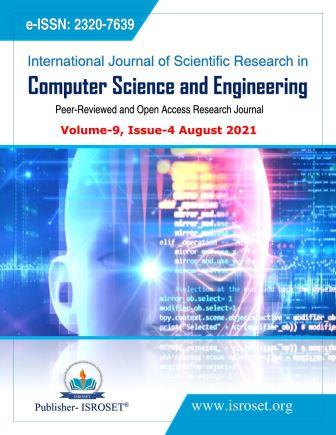Youtube Comment Analyzer
Keywords:
Sentiment Analysis, YouTube commentAbstract
The goal of this study article is to assist a content creator or anyone who wants to know about the audience`s thoughts, emotions, on a particular video. We have studied the literature papers first and then identified the basic functionality of it and then we get to know about its dimensions from the paper.
References
Shi Yuan, Junjie Wu, Lihong Wang and Qing Wang, "A Hybrid Method for Multi-class Sentiment Analysis of Micro-blogs", ISBN- 978-1-5090-2842-9, 2016.
Neethu M S and Rajasree R, “Sentiment Analysis in Youtube using Machine Learning Techniques”
Aliza Sarlan, Chayanit Nadam, and Shuib Basri, "Youtube Sentiment Analysis", 2014 International Conference on Information Technology and Multimedia (ICIMU), Putrajaya, Malaysia November 18 – 20, 2014.
B. Gupta, M. Negi, K. Vishwakarma, G. Rawat, and P. Bandhani, "Study of Youtube Sentiment Analysis using Machine Learning Algorithms on Python," Int. J. Comput. Appl., vol. 165, no. 9, pp. 29–34, May 2017.
“Computationally Efficient Learning of Quality Controlled Word Embeddings for Natural Language Processing," 2019 IEEE Comput. Soc. Annu. Symp. On, p. 134, 2019. Opinion Mining”, Kluwer Academic Publishers. Printed in the Netherlands, 2006.
Hearst, M., “Direction-based text interpretation as an information access refinement”, In Paul Jacobs, editor, Text-Based Intelligent Systems. Lawrence Erlbaum Associates, 1992.
Das, S., and Chen, M., “Yahoo! for Amazon: Extracting market sentiment from stock message boards”, In Proc. of the 8th Asia Pacific Finance Association Annual Conference (APFA 2001), 2001. unsupervised classification of reviews”. In Proc. of the ACL, 2002.
Argamon-Engelson, S., Koppel, M., and Avneri, G., “Style-based text categorization: What newspaper am I reading? ”, In Proc. of the AAAI Workshop on Text Categorization, pages 1–4, 1998.
Pang, B. & Lee, L., “A Sentimental Education: Sentiment Analysis Using Subjectivity Summarization Based on Minimum Cuts”, Association of Computational Linguistics (ACL), 2004.
Jin, W., & HO H. H., “A novel lexicalized HMM-based learning framework for web opinion mining”, Proceedings of the 26th Annual International Conference on Machine Learning. Montreal, Quebec, Canada, ACM: 465-472, 2009.
Brody, S., & Elhadad, N., “An unsupervised aspect-sentiment model for online reviews”, Human Language Technologies: The 2010 Annual Conference of the North American Chapter of the Association for Computational Linguistics. Los Angeles, California, Association for Computational Linguistics: 804-812, 2010.
Wiebe, J., Wilson, T., and Cardie, C., “Annotating expressions of opinions and emotions in language”. Language Resources and Evaluation, 2005.
Downloads
Published
How to Cite
Issue
Section
License

This work is licensed under a Creative Commons Attribution 4.0 International License.
Authors contributing to this journal agree to publish their articles under the Creative Commons Attribution 4.0 International License, allowing third parties to share their work (copy, distribute, transmit) and to adapt it, under the condition that the authors are given credit and that in the event of reuse or distribution, the terms of this license are made clear.







